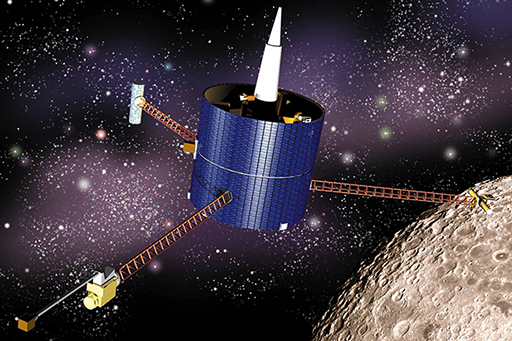2.3 More missions – detail and resolution
The next important milestone in the search for water on the surface of the Moon was the launch of NASA’s Lunar Prospector spacecraft in 1998, designed to provide definitive answers that would either confirm or deny Clementine’s findings once and for all.
This time, rather than use the same radar techniques as the Clementine mission, Lunar Prospector used an instrument called a neutron spectrometer to search for hydrogen on the lunar surface. Since water (H2O) is made up of two hydrogen atoms to every one oxygen atom, any water-ice on the lunar surface would be expected to show up as an area rich in hydrogen.

